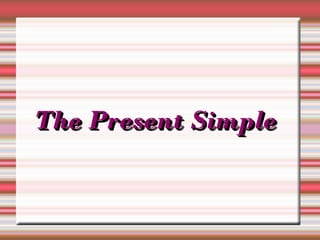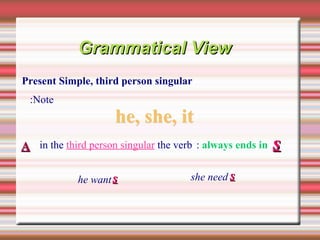The present simple.pdf
- 2. We use the present Simple for ... ???a) Habits and routines I go to the cinema at the weekend ????b) Stative verbs I don't believe in ghosts
- 3. Grammatical View Present Simple, third person singular :Note he, she, it A in the third person singular the verb : always ends in s he want s she need s
- 4. .B Add es :to verbs ending in x sh ss he fix es it push es he pass es ch o she catch es He go es
- 5. C Verbs ending in y the third person changes the; y to ies fly flies cry cr ies :Exception :If there is a vowel before the y play plays pray prays
- 6. ??Negative and question forms use DO or DOES (=the third person of the auxiliary'DO') + the infinitive of the verb. He wants. Does he want? He does not want.
- 7. Time expressions There are time expressions that we use only with the Present Simple and they are Every day, every Friday, every week, every month, every summer,. .every month, every year, always, usually, etc All the time. .I go to school every day .He visits me every summer
- 8. THE END







